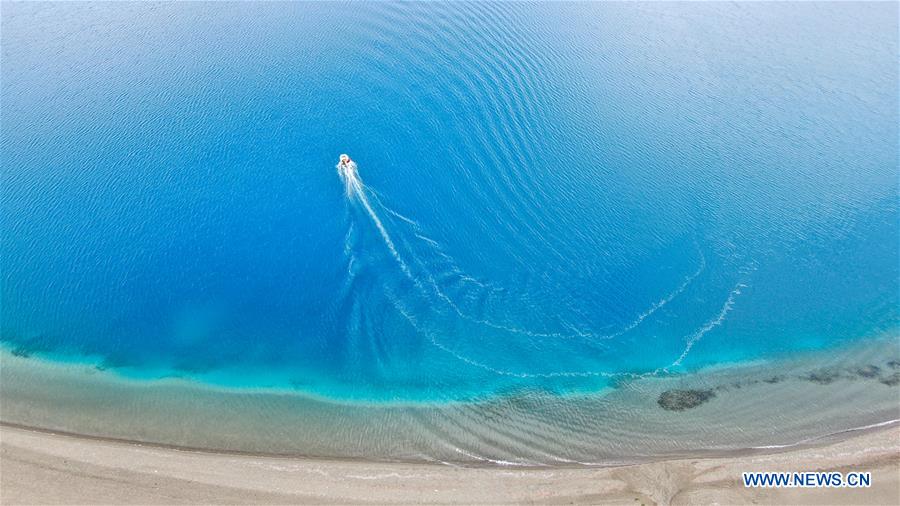Chinese scientists launch survey on depth of major lake in Tibet
Chinese scientists are working on a survey to measure the depth of a major lake in southwest China's Tibet Autonomous Region, sources with the Chinese Academy of Sciences (CAS) said Tuesday.
Chinese scientists are working on a survey to measure the depth of a major lake in southwest China's Tibet Autonomous Region, sources with the Chinese Academy of Sciences (CAS) said Tuesday.
Aerial photo taken on July 22, 2019 shows a Chinese scientific expedition team taking a boat to the main area of Lake Yamzhog Yumco for survey in Nanggarze County of Shannan, southwest China's Tibet Autonomous Region. Chinese scientists are working on a survey to measure the depth of a major lake in southwest China's Tibet Autonomous Region, sources with the Chinese Academy of Sciences (CAS) said Tuesday. Lake Yamzhog Yumco with an area of about 590 square km is located in Nanggarze County in the city of Shannan. Yamzhog Yumco along with Lake Namtso and Lake Manasarovar are regarded as the three holy lakes of Tibet. [Photo/Xinhua]
Lake Yamzhog Yumco with an area of about 590 square km is located in Nanggarze County in the city of Shannan. Yamzhog Yumco along with Lake Namtso and Lake Manasarovar are regarded as the three holy lakes of Tibet.
About 70 km away from Lhasa, capital of the region, the lake has become one of the most popular tourist attractions in Tibet.
This is the first time for Chinese scientists to conduct a comprehensive measurement of the depth contours of the lake.
The survey is part of the country's second comprehensive scientific expedition to the Qinghai-Tibet Plateau that began in June 2017. Lasting five to 10 years, the expedition will conduct a series of studies focusing on the plateau's glaciers, biodiversity and ecological changes, and will also monitor changes in the region's climate.
China's first comprehensive scientific expedition to the plateau took place in the 1970s and covered more than 50 disciplines including structural geology, paleontology, geophysics, climatology, zoology and botany.
Dubbed "the water tower of Asia," the plateau provides the water supply for many Asian rivers including the Yangtze, Yellow River and Mekong River. As the water resources of the plateau are also vulnerable to the influence of climate change, it is important to find out the water storage of glaciers and lakes and the runoff of rivers.


